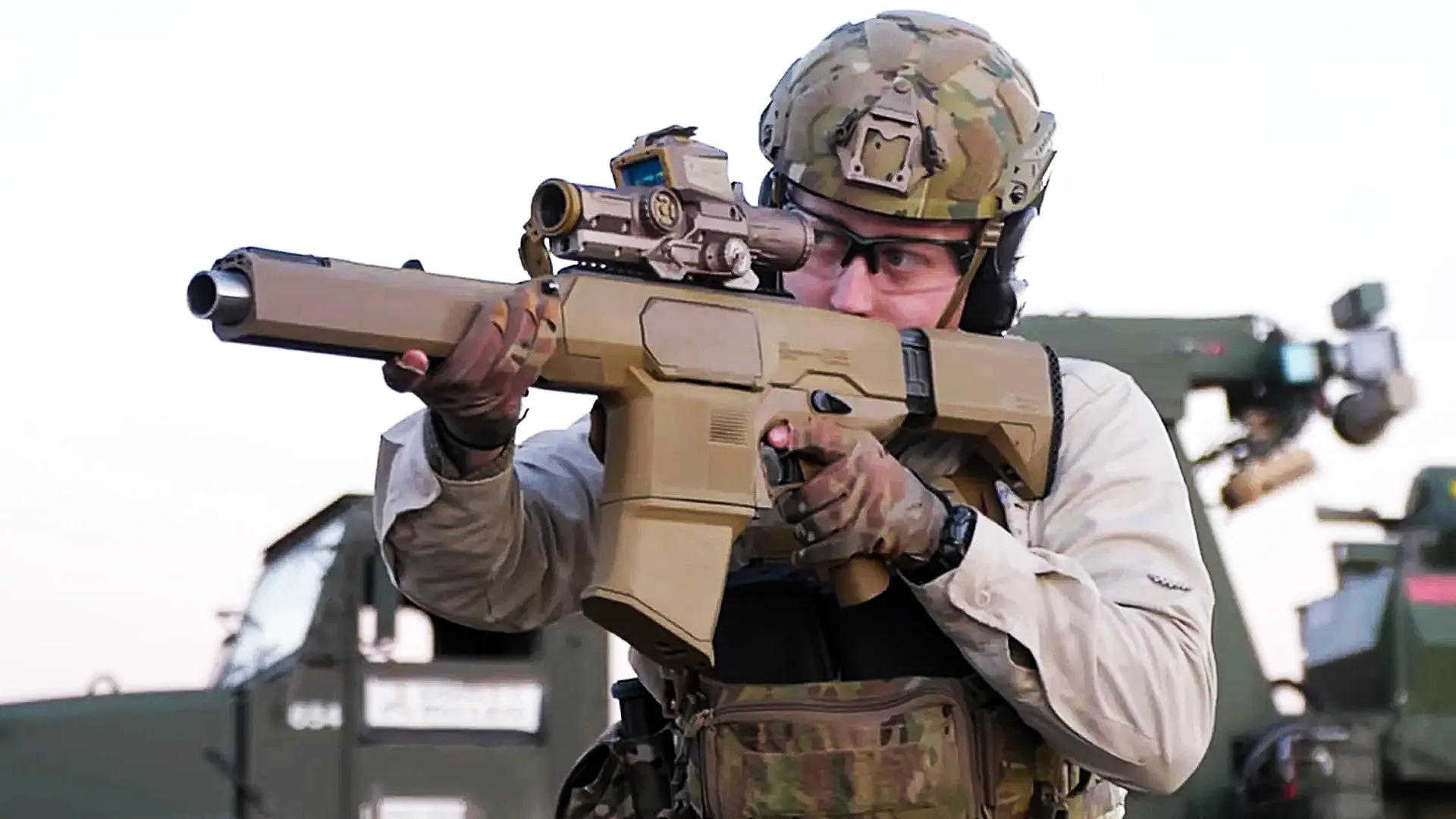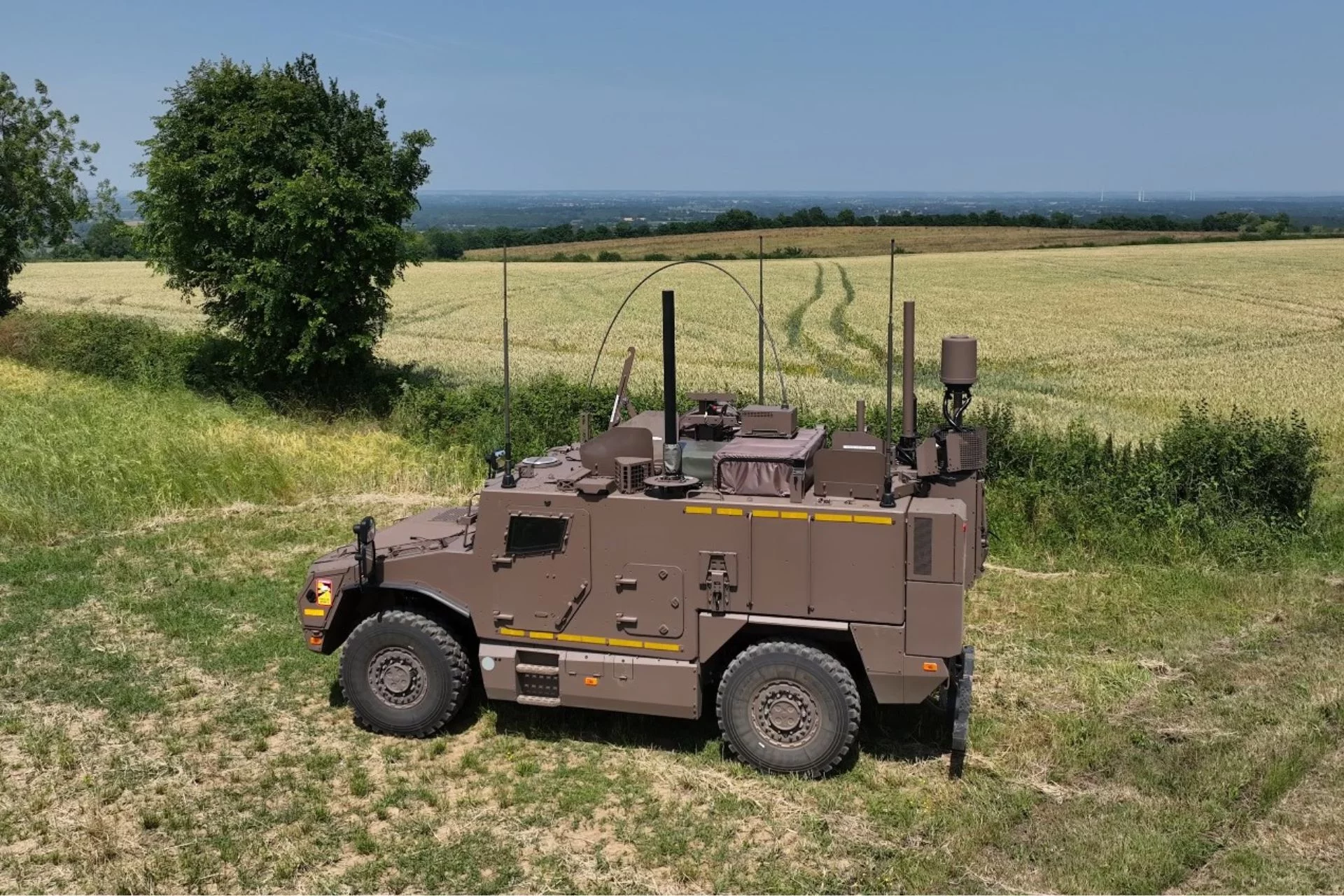In the high-stakes world of modern warfare, where enemies lurk behind walls, zip through the skies as tiny drones, or hunker down in urban sprawl, the U.S. military is always one step ahead—or at least desperately trying to be. Enter the ghost of projects past: the infamous XM25 “Punisher,” a grenade launcher that promised to revolutionize infantry firepower but ended up as a cautionary tale of ambition gone awry. Fast forward to today, and Northrop Grumman, in a bold partnership with Colt, is resurrecting that spirit with a sleek, smarter 25mm beast that’s not just learning from the Punisher’s failures—it’s out to bury them. This isn’t your grandpa’s underbarrel grenade launcher; it’s a semi-automatic game-changer designed to punch through cover, swat drones mid-flight, and breach doors like they’re made of paper. Buckle up, because we’re diving deep into how this weapon could redefine squad-level lethality on the battlefield.
The Rise and Spectacular Fall of the XM25 “Punisher”: A Lesson in Overreach
To understand the brilliance (and blunders) behind Northrop Grumman’s latest creation, we have to rewind the clock to the mid-2000s. It was a time when the U.S. Army was knee-deep in the sands of Iraq and Afghanistan, grappling with insurgents who loved nothing more than hiding behind mud walls, rocky outcrops, or any scrap of cover they could find. Traditional grenade launchers like the M203 or M320—those trusty 40mm tube-under-the-rifle setups—were reliable, sure, but about as precise as lobbing a rock. Rounds either fell short, sailed harmlessly overhead, or exploded too early, leaving enemies unscathed and soldiers frustrated.
Enter the XM25 Counter Defilade Target Engagement (CDTE) System, aka the Individual Semiautomatic Airburst System (ISAAS), but forever etched in lore as the “Punisher.” Born from a collaboration between German engineering powerhouse Heckler & Koch (HK) and U.S. munitions giant Alliant Techsystems (ATK), the XM25 was a vision of futuristic firepower. Picture this: a bullpup-configured launcher chambered in 25mm, weighing around 14 pounds, with a computerized fire control system that included a laser rangefinder, thermal imaging, and ballistic computer. You’d lase the target, set the fuse on a programmable airburst round, and—boom—shrapnel rains down exactly where the bad guys are hiding, up to 500 meters away. It was like giving every infantryman a personal artillery spotter.
The hype was real. Early prototypes wowed testers in 2007, and by 2010, the Army was dropping millions into development. Orbital ATK (formed when ATK merged with Orbital Sciences in 2015) kept the momentum going, but cracks soon appeared. The weapon was bulky—too heavy for prolonged patrols in scorching deserts. Recoil kicked like a mule, and the cost? Eye-watering. Each round was pricier than a steak dinner for four, and the whole system tipped the scales at a wallet-busting $35,000 per unit. By 2018, after Northrop Grumman scooped up Orbital ATK, the Army pulled the plug. “Too heavy, too bulky, too expensive,” was the official line. The Punisher had punished itself right out of existence.
But here’s the silver lining: all that R&D didn’t vanish into the ether. As Rylan Harris, Director of Strategy and Business Development for Northrop Grumman’s Armament Systems business unit, put it during a recent press briefing, “From the PGS side of things, I’d say the very initial baseline is from the Orbital ATK XM25 design. Similar caliber, I’d say similar programmable airburst round, which helps give that maturity.” In other words, the Punisher’s DNA— that potent mix of 25mm smart munitions and digital smarts—is alive and kicking, evolved into something leaner, meaner, and ready for the drone-filled battlefields of 2025 and beyond.
Enter the Northrop Grumman-Colt 25mm Launcher: Punisher 2.0, Smarter and Deadlier
If the XM25 was a promising prodigy that flunked out of school, the new Northrop Grumman-Colt collaboration is the straight-A sibling who’s joined the military and bulked up. Unveiled as the baseline design for the U.S. Army’s Precision Grenadier System (PGS) program—which kicked off around 2020—this launcher isn’t reinventing the wheel; it’s turbocharging it. Weighing in at a svelte 11.5 pounds (that’s three pounds lighter than its predecessor), it’s semi-automatic, feeds from compact five-round box magazines, and looks like an oversized AR-15 on steroids. No more lugging around a back-breaking brick; this thing is built for the guy humping a ruck through Taliban territory or urban alleys in Eastern Europe.
At its heart is a “revolutionized” fire control system and ammunition suite, as Harris describes it. Gone are the XM25’s clunky limitations. The old Punisher couldn’t touch uncrewed aerial systems (UAS)—those pesky quadcopters that scouts use to drop grenades or spy on your position. Nor could it reliably breach doors without turning into a Hollywood prop. Northrop’s team has flipped the script: “The XM25 system did not have a counter-UAS capability, nor was there a door breaching capability developed at that point in time,” Harris explained. “So, we’ve kind of completely revolutionized the fire control, as well as part of the ammunition suite, to provide a lighter weight [and] more reliable weapon system.”
Let’s break down the ammo magic, because that’s where the real fireworks happen. Northrop has cooked up four tailored 25mm rounds to make this launcher a Swiss Army knife of destruction:
- Airbursting Round: The XM25’s signature move, upgraded. Program it to explode mid-air over cover, shredding hidden foes with a hail of fragments. Effective out to 500 meters (1,640 feet), it turns “defilade” (fancy talk for hiding behind stuff) into a bad life choice.
- Counter-UAS Proximity Round: The drone-killer we’ve all been waiting for. This bad boy uses proximity fuses to detonate near small flying threats, turning your squad’s airspace into a no-fly zone. In an era where $500 commercial drones can pack military-grade payloads, this is a force multiplier.
- Close Quarter Battle (CQB) Round: Door-kicking perfection. Designed for breaching fortified positions or engaging in tight spaces, it delivers focused blasts without the overkill of bigger calibers—ideal for room-clearing in cities like Mosul or Mariupol.
- Target Practice Round: Because even terminators need range time. Inert but ballistically matched, it lets troops train without bankrupting the budget.
Pair this with optics that scream “next-gen.” Prototypes have been spotted rocking the XM157 from Vortex Optics—the same computerized sight standard on the Army’s new XM7 rifles and XM250 machine guns. It integrates laser rangefinders, digital magnifiers, and augmented reality overlays for pinpoint accuracy. There’s also buzz about the SMASH-series from Israel’s Smartshooter, already battle-tested by U.S. forces and British paratroopers for anti-drone work. A multi-button control pad just ahead of the trigger hints at on-the-fly mode switching—airburst here, proximity there—making it intuitive even under fire.
The PGS requirements are no joke: counter hidden targets, zap light armor and drones, breach doors, handle CQB, and hit 500 meters minimum. This launcher checks every box while sipping on the lighter recoil and weight of 25mm rounds compared to bulkier 30mm or 40mm rivals. As Harris summed it up: “We’re definitely keeping a strong bead on the competitive landscape there. From our analysis, we feel that our offering, and 25 millimeter [ammunition], provides the least amount of strain on the soldier regarding weight, as well as kick to the weapon system, while providing the maximum amount of range to be able to take out threats well beyond what the warfighter can see.”
Facing Off Against the Competition: A Grenade Launcher Hunger Games
Northrop and Colt aren’t strolling into this alone—the PGS arena is a gladiatorial pit of innovation. The Army’s been teasing this competition for years, but no firm timeline yet for kickoff, winner picks, or fielding dates. Still, the field’s heating up, and Secretary of the Army Daniel Driscoll was recently eyeballing mockups like a kid in a weapon candy store.
Leading the pack? Barrett Firearms and MARS, Inc., with their 30mm Squad Support Rifle System (SSRS). This semi-auto monster snagged the Army’s xTechSoldier Lethality design challenge win in May, boasting even bigger booms for vehicle-busting. Then there’s Fabrique Nationale (FN) America’s PGS-001 (rebranded MTL-30), another 30mm finalist that just locked in a risk-reduction contract. FN’s got that Belgian precision, aiming for similar versatility but with a chunkier punch.
Don’t sleep on Rheinmetall’s Highly Advanced Multi-Mission Rifle (HAMMR), an evolution of their 40mm Squad Support Weapon 40 (SSW40). It’s sticking with the legacy 40x46mm round for proven logistics but amps it up with smart tech. Each contender brings something to the table: Barrett’s raw power, FN’s refinement, Rheinmetall’s familiarity. But Northrop’s 25mm play? It’s the Goldilocks choice—just right for mobility without sacrificing smackdown.
Harris let slip that Northrop’s got “a track with the Army” for risk reduction—separate from FN’s deal—and wouldn’t spill more. Tease! Oh, and the U.S. Marine Corps is sniffing around too: “We are working with the Marine Corps, as well. So it’s not just a single service that’s interested in the PGS offering.” Multi-service adoption? That’s the dream for any defense contractor.
Why This Matters: From Battlefield Edge to Global Game-Changer
Zoom out, and the PGS isn’t just about a cooler boom-stick; it’s a response to how war’s warped since the Punisher’s heyday. Drones aren’t sci-fi anymore—they’re cheap, ubiquitous, and deadly. Urban fights in places like Gaza or Ukraine show cover is king, and precision is survival. Legacy launchers like the M203 are relics in this mix; they’re accurate to maybe 150 meters on a good day, with rounds that dumbly arc and pray for a hit.
This 25mm launcher bridges that gap, empowering the individual grunt with artillery-level effects. Imagine a fireteam in a contested city: one spots a drone with the XM157’s thermal, switches to proximity mode, and poofs it mid-hover. Another lases a sniper behind a wall—airburst shreds the position without exposing the squad. Door breach? CQB round handles it, minimizing collateral in tight spots. And at 11.5 pounds, it’s not sidelining the rifleman; it’s augmenting him.
The implications ripple wider. Cost savings from smarter, lighter ammo could stretch budgets further. Training gets easier with practice rounds that mimic the real deal. And for allies? Export potential is huge—British Paras already dig Smartshooter tech; this could standardize NATO squads. But risks linger: Will the Army commit? Can production scale without XM25-style overruns? History whispers caution, but innovation screams opportunity.
In the end, Northrop Grumman’s 25mm launcher isn’t revenge—it’s redemption. The Punisher’s ghost haunts these prototypes, but wiser, wieldier, and wired for tomorrow’s threats. As the PGS competition looms, one thing’s clear: whoever wins, infantry firepower just got a whole lot fiercer. Stay tuned—this could be the weapon that tips the scales in the next big fight.




